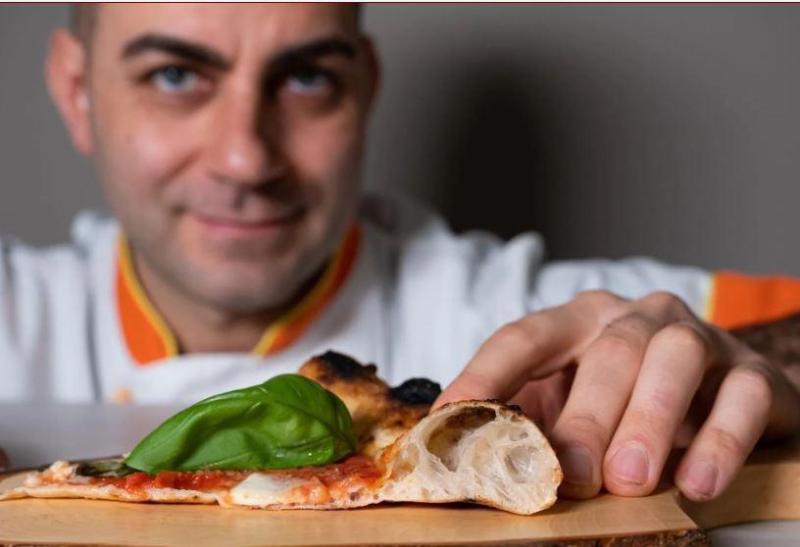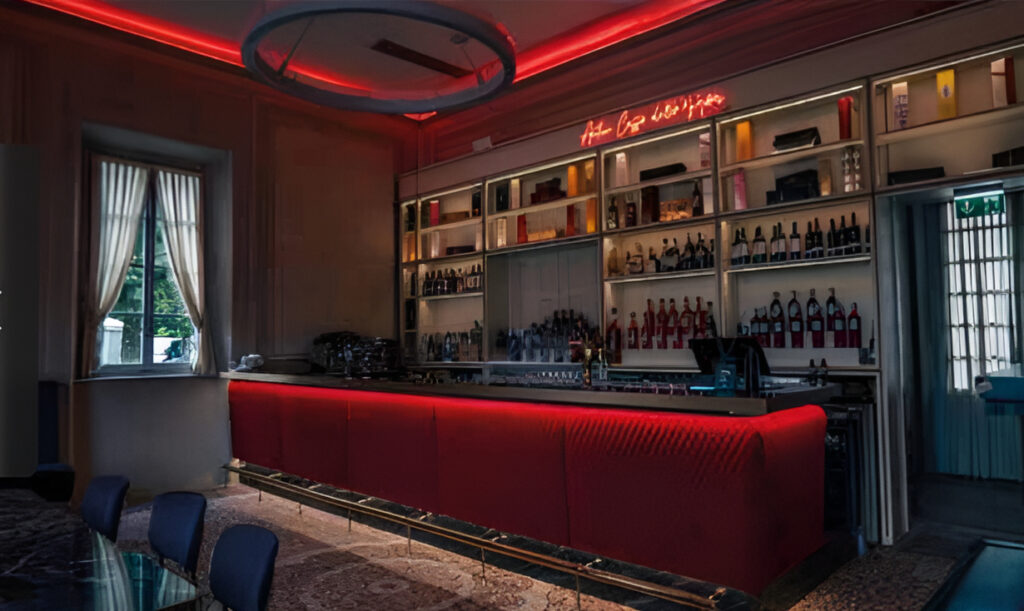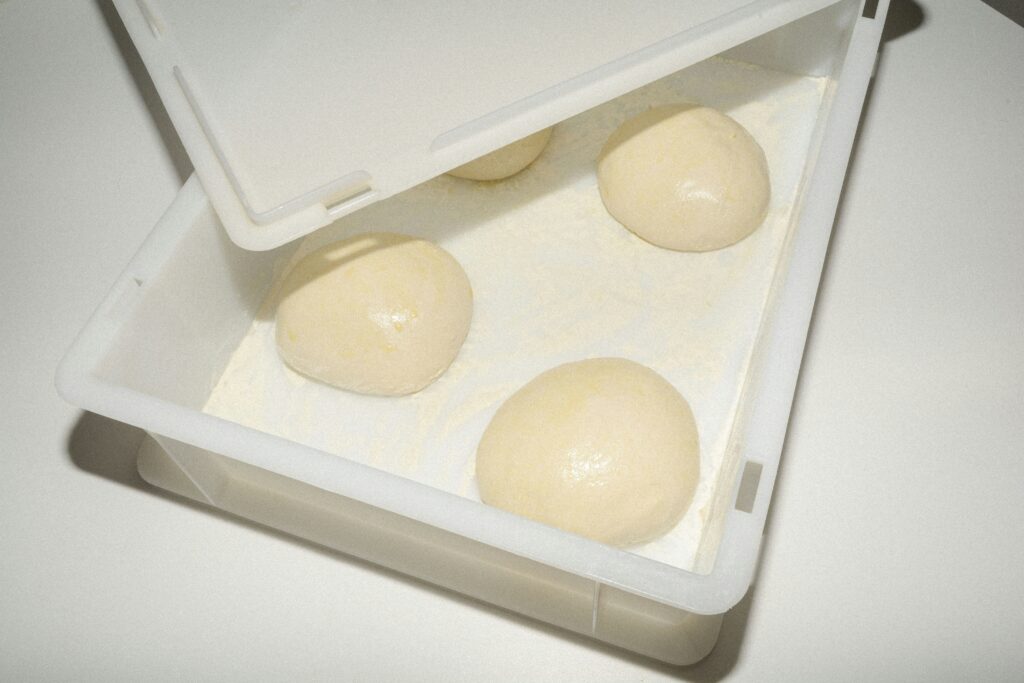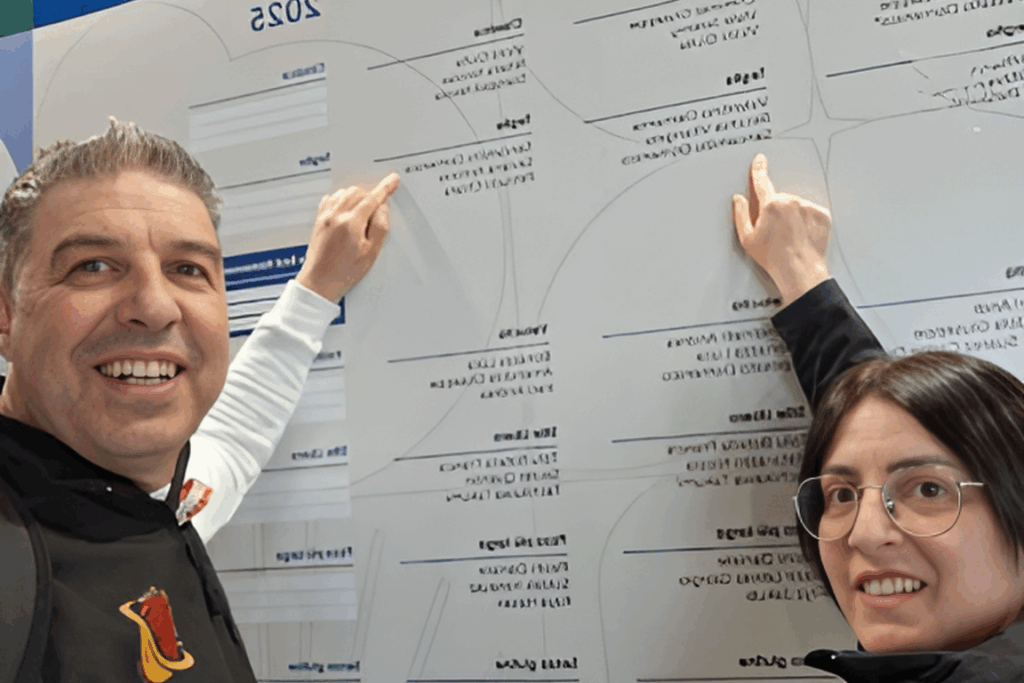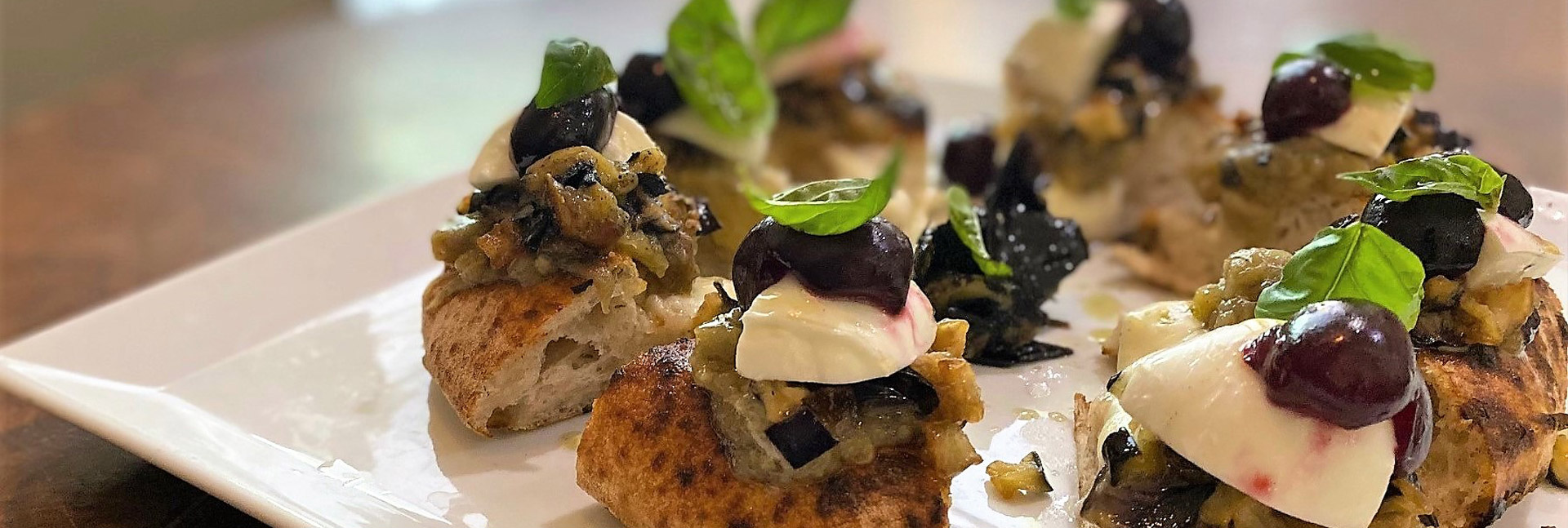
O’ Fiore Mio is one of the most famous pizzerias in Emilia Romagna, probably the one in the region that has contributed to renewing the image of this product and its nuances. The creator of the project is Davide Fiorentini, a dynamic and yet very pragmatic person, one of those who can understand how fundamental all-round quality is, from the flour to the dough and ingredients, without forgetting the strategic importance of hospitality and the combination of pizza and wine.
This is a great opportunity to meet him together with Piergiorgio Parini, a talent of avant-garde cuisine who cares about sustainability as a core concept and extended to every gastronomic field.
As Fiorentini says ” The dough has always been a priority for us. In the case of the pizza we created together, it’s a classic dough, with type 1 flour, 73% hydration and mother yeast refreshed every day with strong flour. Twenty-four hours pass between maturing and leavening. Baking takes place in a wood-fired oven, the result is balanced, and the consistency is similar to that of a focaccia”. Davide continues: “the pizza is between 26 and 28 centimeters in diameter, the dough ball is 280 grams, quite thick, the baking in the wood-fired oven takes place at the entrance of the oven, at a temperature between 380 and 400 C° for about 3 minutes. Knowledge and attention are needed; the baker’s craft is essential.” Parini’s point of view is clear: “When the worlds of pizza and cuisine meet, it is not enough to transfer the ingredients of a dish onto a pizza, more or less high, more or less crispy. In my opinion, a different approach has to be taken, because the dough has to be integrated and the combination has to make sense.

Our pizza today is vegetable-based. We’re in summer, eggplant is in its prime and so we decided to make it the star.” Not only that, because this is where this chef’s sensitivity to energy savings comes into play: “We used the oven to do the preparation as well; in fact, very often in pizzerias people don’t think about the benefit of having an oven running ten hours a day, and so they never use it to do the preparations. The value that vegetables but also meat or fish can take in cooking using a wood-fired oven is important. So we cooked some eggplant over the embers while the oven was heating up, then made a puree with the heart of the eggplant cooked over the high flame (we use the round eggplant which is much larger and has much more pulp and water). The skin gets charred, we open it up and peel it off, we don’t smash it too much because I like it to have some texture and not become a cream. The same process is done with the long eggplant, but it is much smaller and less pulpy. The skin is thinner and with the same cooking you get two different textures. Both are seasoned with oil and salt and no flavoring elements are used. The bare, raw vegetable.” As for cooking, for the round eggplant it takes half an hour because “it depends on embers and sensitivity and on the conditions of the flame”. A third of the time instead is required by the long one. “You then take some more eggplant, fry it and make it crispy with semolina. Finally, we add an element that I really like and that may seem to be out of place, but it is still related to the season. I’m talking about cherries, which at this time of year are at their peak, ripe and juicy. They are cut in half and seasoned with oil, salt, very little sugar, and red wine vinegar, practically marinated. They must maintain their firm texture and at the same time absorb the seasoning, so they have an acidic boost that enlivens the preparation. At the end we add raw buffalo mozzarella so that the milk of the mozzarella and the watery part of the eggplant combine well”.
The aspect of mozzarella is crucial, Fiorentini explains: “It must not undergo the cold chain, it must feel the low temperature as little as possible even though we obviously have to store it in the refrigerator. However, we try to preserve it as best as we can by serving it at room temperature; the one we use comes from the area of Caserta, it’s very crispy and intense.” Also for Fiorentini, the theme of sustainability and waste reduction is essential, first of all starting with the great attention to the use of seasonal products: “then I’ve always thought that if you want to work with a certain raw material, at a cost level you have to do zero waste. Here, nothing is wasted, and we pay great attention to cooking techniques.
We rely almost exclusively on local resources. In Romagna we have an agri-food sector that everyone envies us. In any case, it’s easy to talk about sustainability, it’s very fashionable. It is much more complicated, however, to do something concrete, to have a thought, a logical thread that must unite ingredients and an approach that – in addition to the importance of the ingredients – takes into consideration the training of the people who work with you, so that they look in the same direction. It’s a job that has to be done from the ground up and it’s complicated because it requires a great deal of intellectual effort, of thought, to try to make the most of what you have in your hands. It’s much easier to take a vegetable and use only the center of it, because that’s the most beautiful part of it; but everything else can’t just be thrown away like that.
We need to be able to give value even to things that seem to have little to express and do it through our work, not just through words. A different way of thinking to be carried out and communicated to the customer also through the training of the dining room staff. If you don’t tell and don’t transmit you lose the half of it, that’s why the explanation of a pizza must be done also in function of this.
